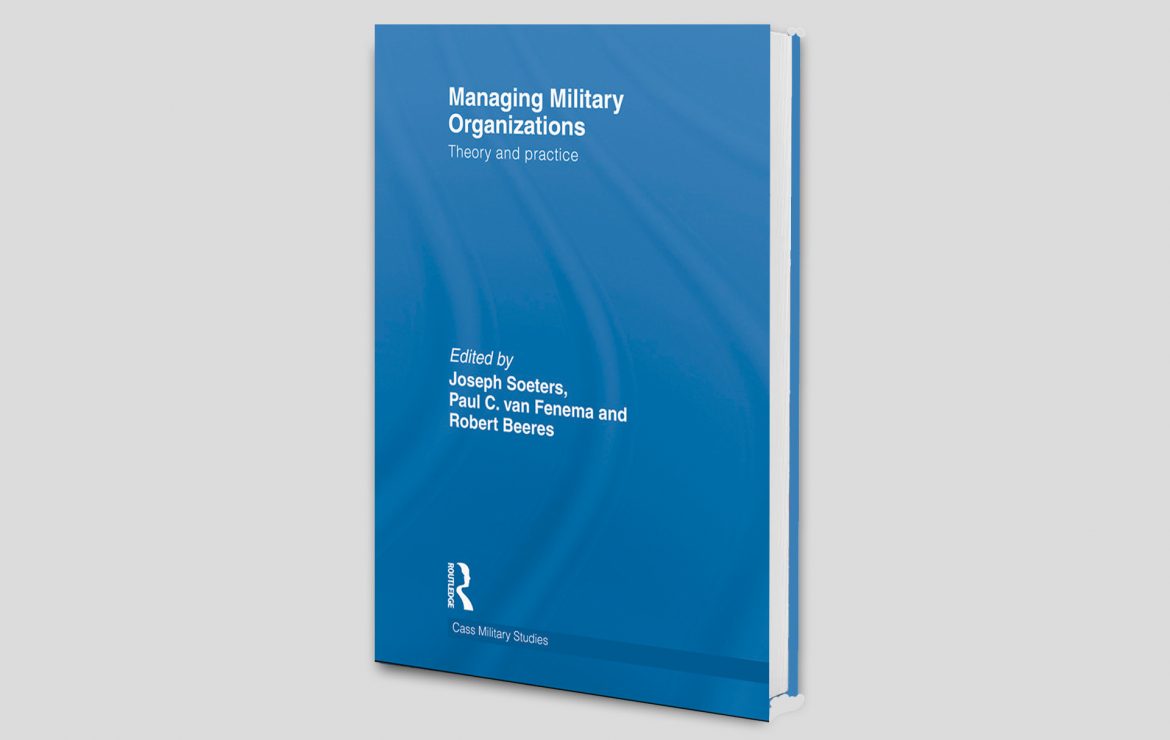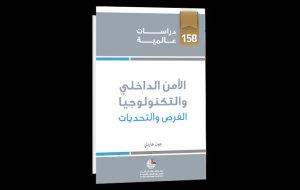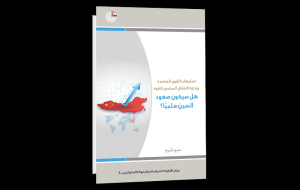Edited by a team from the Netherlands Defence Academy (NLDA), the book combines contributions from NLDA faculty, as well as experts and academics in the UK and US. It considers the scope for applying civilian management and organizational theory to military organizations, while recognizing the unique nature of military organizations, which often operate in exceptional circumstances. The book offers practical insights for military, and civilian, organizations faced with exceptional, ‘hyper’ conditions.
The book is based on the planning-and-control cycle, which begins with a phase of external orientation and strategic planning, before moving on to internal coordination and preparation stages. The cycle proceeds with production or delivery activities, before ending with a review phase, to monitor outcomes and effectiveness. By aggregating the learning processes within the cycle, it becomes a self-perpetuating process. Each phase of the cycle is reflected in the book’s four parts, which consist of twenty chapters.
Section One addresses the contextual, external and strategic aspects of military organizations, as the authors detail features of the twenty-first century military landscape. In a number of Asian and African regions, upheaval persists in so-called ‘failed states’, while trans-national terrorist networks are a persistent threat. Today’s militaries are required to respond to these issues under the auspices of international organizations, operating in a complex, interconnected environment. In the age of rapidly developing technologies, network-centric warfare connects the individual soldier or aircraft operator in real-time to commanders, headquarters and defense departments. In addition, the modern conflict arena consists of land, sea, air and even space-based autonomous systems, all coordinating with personnel and other autonomous systems.
Section Two looks at topics related to internal coordination and operational preparedness. It provides a general overview of the concepts and theories underpinning the structure of military institutions and deployment preparation. The section also examines the increasing importance of regulatory controls, particularly given the growing relationship between the military and outsourced private-sector companies. Operational planning is also addressed in detail, with analysis of logistics, resource management, information technology and intelligence activities.
Section Three turns to leadership, specifically during military operations. It provides an overview of the literature on broad concepts of leadership, before focusing on military leadership and responses to the types of issues faced today. In particular, the section sheds light on potentially lethal military operations, highlighting the need to prioritize moral and ethical issues when managing operations. The important role of military law is considered in this context, underscoring the point that military leaders should have the necessary authority, within disciplinary frameworks, to tackle inappropriate or criminal behavior among personnel. This section also draws attention to work carried out by military institutions that can often be overlooked, such as securing humanitarian aid as part of disaster relief, whether nationally or internationally. These contributions are extremely valuable, and can be further developed to maximize their effect.
Section Four considers the final element of the planning and control cycle; monitoring operational effectiveness and results. While recently developed information and communication technologies have a vital role in assessing operational effectiveness, the authors contend that personal interactions and common-sense judgements remain indispensable. A good military leader should be equipped to implement results monitoring measures, as well as measures to monitor actions and personnel. Systems applied by military organizations to identify operational efficiency are referred to as “effects-based approaches to operations”. However, these strategies have been controversial, with some commanders branding them counterproductive. The authors consider arguments for and against an effects-based approach to operations, alongside the validity of alternative approaches.
This section also looks at the ways in which military organizations have strived to become learning organizations, which in turn drives a focus on ‘After Action Reviews, Lessons Learned and Knowledge Management’. These tools may also provide the means to achieve further organizational improvements. Moreover, this approach can help evaluate the outcomes of operations, specifically the overall wellbeing of military personnel and their families. The aim is to support deployed soldiers engaged in tough military operations, particularly where there is a risk of psychological trauma. It has become the duty of military organizations to look after their personnel on their return from operations.
The editors conclude by summarizing the key points made in all four sections, emphasizing the complexity of the task facing contemporary military organizations.
About the Editors:
Edited by Joseph Soeters, Paul C. van Fenema and Robert Beeres
Joseph Soeters
Prof. Soeters chairs the Department of Management, Organization Studies and Defence Economy at Netherlands Defence Academy. He is also Professor in Organizational Sociology at Tilburg University, the Netherlands.
Paul C. van Fenema
Prof. van Fenema is Professor of Military Logistics and Associate Professor of Organizational Studies at Netherlands Defence Academy. His research has been widely published, and he specializes in network coordination and control within military logistics.
Robert Beeres
Dr. Beeres is Professor of Defence Economics at the Faculty of Military Sciences, Netherlands Defence Academy. His research interests focus on accounting systems development and efficiency criteria within military organizations.
Publisher of Arabic Translation: The Emirates Center for Strategic Studies and Research (ECSSR)
Year of Publication (Arabic): 2016













